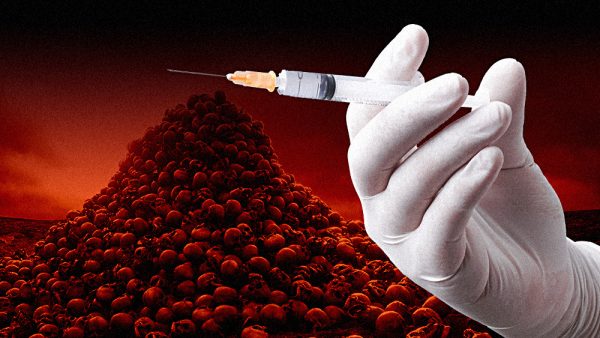 Parler
Parler Gab
Gab
Is BromAc a natural solution for covid jab spike protein damage?
While treatment with acetylcysteine alone did not show any alteration of spike proteins, a combination of acetylcysteine and bromelain, or BromAc, at 50 and 100 µ g/20 mg/mL and 50 and 100µ g/mL, respectively, resulted in significant protein alteration. "Treatment with Acetylcysteine on the envelope protein did not alter the protein, whereas treatment with Bromelain at 50 and 100µ g/mL and BromAc at 50 and 100µ g/20 mg/mL also resulted in near complete and complete fragmentation, respectively," the paper further explains. In other words, combining these two nutrients at the levels depicted in the study led to destabilization and unraveling of covid spike proteins, which is good news for everyone who got jabbed, as well as for those who may have had spike protein "shed" on them from a fully vaccinated person. Since the tests were conducted in vitro, or in a test tube, more study is needed to determine if the same results can be achieved in actual human subjects. Still, the results are "encouraging," the researchers say, pointing to a natural solution for covid spike proteins that otherwise outsmart most other potential remedies. "There is currently no suitable therapeutic treatment for early SARS-CoV-2 aimed at preventing disease progression," the authors note. "BromAc is under clinical development by the authors for mucinous cancers due to its ability to alter complex glycoprotein structures. The potential of BromAc on SARS-CoV-2 spike and envelope proteins stabilized by disulfide bonds was examined and found to induce the unfolding of recombinant spike and envelope proteins by reducing disulfide stabilizer bridges." "BromAc also showed an inhibitory effect on wild-type and spike mutant SARS-CoV-2 by inactivation of its replication capacity in vitro. Hence, BromAc may be an effective therapeutic agent for early SARS-CoV-2 infection, despite mutations, and even have potential as a prophylactic in people at high risk of infection." You can read the full story for free at ResearchGate.net. You will also find more stories like this at CoronavirusNutrients.com. Sources for this article include: ResearchGate.net NaturalNews.comPaul Offit pens letter to NEJM calling for immediate end to COVID “boosters”
By Ethan Huff // Share
Ben Armstrong: Data shows globalists are succeeding with their DEPOPULATION plan
By Kevin Hughes // Share
Here are 4 reasons to include tree nuts in your diet
By Olivia Cook // Share
Medicinal plants: 5 Herbs that can help boost respiratory health
By Zoey Sky // Share
Governments continue to obscure COVID-19 vaccine data amid rising concerns over excess deaths
By patricklewis // Share
Tech giant Microsoft backs EXTINCTION with its support of carbon capture programs
By ramontomeydw // Share
Germany to resume arms exports to Israel despite repeated ceasefire violations
By isabelle // Share









